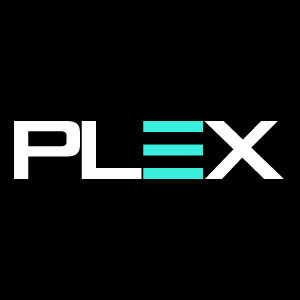Imagine a new professional, walking into her first Sales and Operations Planning Meeting at the multinational corporation who hired her only a few weeks earlier. This is a big moment for the new employee.
The meeting might be awash with numbers, spreadsheets, graphs, and interactions between people that she doesn’t yet understand completely. Managers might talk a language that is rather unfamiliar. She understandably may feel somewhat overwhelmed.
The language of Supply Chain Management is important. Practitioners need to take special care to define terminology clearly, to avoid misunderstandings. As a relatively new business concept, SCM strives to promote a common lexicon that is universally recognized and accepted.
Frequently, for example, business people use the terms “forecast” and “plan” as if they are synonymous. But these two words carry very different meanings and the implications of confusing the two can be significant.
A forecast is a prediction of future events, using a means other than simply making a blind guess.
A plan, on the other hand, is an articulation of how a company intends to respond to a demand forecast. Ultimately, the plan integrates many other factors in addition to the forecast in order to set operational direction for the business.
There are many types of forecasts that are used in business. Companies assemble technological forecasts, economic forecasts, and demand forecasts. It is the demand forecast that is of greatest interest to an operations manager, and supporting the fulfillment of future demand is of critical importance to supply chain professionals. We use demand forecasts to help us plan capacity, human resources, and logistics strategies.
We understand that, because of the myriad variables at play, forecasts are rarely 100% accurate. In spite of the shortcomings, forecasting is an essential part of planning for the future. By taking the time to operationalize the forecast and develop a plan, we are forced to think through potential positive or negative scenarios. Over time, careful forecasting will lead to more efficient and realistic planning.
In contrast to forecasting, planning is the process whereby a business considers all strengths, weaknesses, opportunities, and threats, and provides direction to the company in its entirety. The plan metabolizes not only the forecast, but it also balances demand with the company’s ability to fulfill demand. These two sides of the scale are sometimes referred to as “priority” (demand) and capacity (supply). Further, the plan can articulate methods by which a business will try to influence the forecast, perhaps by increasing demand or shifting the timing of demand through marketing.
Companies that use a formalized Manufacturing Planning and Control (MPC) architecture will direct different levels of forecasts toward different levels within the planning hierarchy.
Highly aggregated forecasts of future demand and economic conditions will be directed toward the Strategic Planning activities near the top of the MPC hierarchy. Somewhat disaggregated forecasts at product category of family levels will be of greatest interest to the Sales and Operations Planning functions that are undertaken by mid-level management. Very detailed item-level forecasts for finished goods will be used most commonly in the Master Production Scheduling (MPS) and Control activities. It is important that the SCM professional use forecasting techniques and approaches that match the intended use of the forecast.
Taking the demand forecast into consideration and combining it with other forces that come to bear on the company such as the labor market, economies of scale, and the potential for realizing manufacturing efficiencies, business leaders might choose between a level, chase or hybrid production strategy. Depending upon the production strategy used, the forecast and the operational plan can be at significant variance from each other, and this will be by design.
Operations managers are responsible to achieve planned production levels, and through this key performance metric, operations will support fulfillment of demand and will support marketing sales strategies. Financial plans will flow from the construction of sales and operational plans, resulting in the calculation of cash flow, inventory, and profitability projections.
Sales and Operations Planning (S&OP) activities provide a key link between the market (external to the business) and internal manufacturing processes. S&OP drives the Master Production Schedule (MPS), which is the time-phased statement of what quantities of finished goods are required, and precisely when those quantities are required. Manufacturing is held responsible to complete the MPS. This activity is frequently called “hitting the schedule.”
It is not unusual that, as the year progresses, new demand forecast information comes to light that puts sales potential at wider variance from the production plan than was originally foreseen. It is through a disciplined monthly S&OP process that such differences become reconciled. Appropriate adjustments to the plan are made in response.
In summary, we have seen that the operations plan is not a forecast of demand. Rather, the demand forecast becomes metabolized in the business through Sales and Operations Planning. S&OP takes into consideration not only the demand forecast, but also constraints faced by the business, technological realities, marketing initiatives, and financial targets. Output from the S&OP process becomes a key input to the Master Production Schedule, achievement of which is a key focus of the manufacturing team. Production strategy works to decouple the forecast from the production plan, even as manufacturing execution supports the sales plan.
Contact us if you would like to learn how DemandCaster can help you reap the benefits of effective S&OP planning.
Related Articles
